Table of Contents Show
There are certain things you should look for when you’re buying any RV. While you’re probably more concerned with the number of slides, sleeping capacity, and overall RV length, there’s one important feature you shouldn’t overlook. Just like a kid gets a sticker after visiting the doctor, RVs need to get an RVIA certification sticker before rolling off the assembly line.
Many people easily overlook this sticker while shopping for an RV. So what does the RVIA certification sticker on your mean? Let’s see what all the fuss is about!
About the RV Industry Association (RVIA)
The RV Industry Association (RVIA) is an association that represents 450 RV manufacturers and numerous aftermarket suppliers. These manufacturers and suppliers are responsible for producing 98% of all RVs in the United States. The association has offices in Reston, Va., and Elkhart, Ind. They’re among the loudest voices in the RV industry, worth $140 billion.
They have their hands in several different areas as it relates to RVs. The RVIA works with state and federal regulators and lawmakers to ensure its members have a favorable business environment. They also do a tremendous amount of research on the RV industry and promote RVing in various marketing campaigns under the Go RVing program. However, that’s not all the RVIA manages regarding RVs.
The RVIA also manages an inspection program that audits RV manufacturers for compliance with certain safety standards. The association inspects methods and quality of plumbing, heating, fire and life safety, and electrical system codes. Members of the RVIA must follow the strict guidelines created by the entity to help ensure safety while RVing. It also runs the RV Technical Institute, a training program for RV service technicians.
What Is an RVIA Certification?
An RVIA certification is its stamp of approval on an RV and its construction. RVs certified by the RVIA wear a shiny black-and-gold sticker near the entrance of the RV. The certification ensures that members maintain specific standards when constructing their RVs.
There’s no requirement for RV manufacturers to become RVIA members; many DIY RV builders and truck camper manufacturers aren’t members. However, some states require RV dealers only to sell RVs with the RVIA certification. While it may look like nothing more than a sticker, it can mean much more than you think.
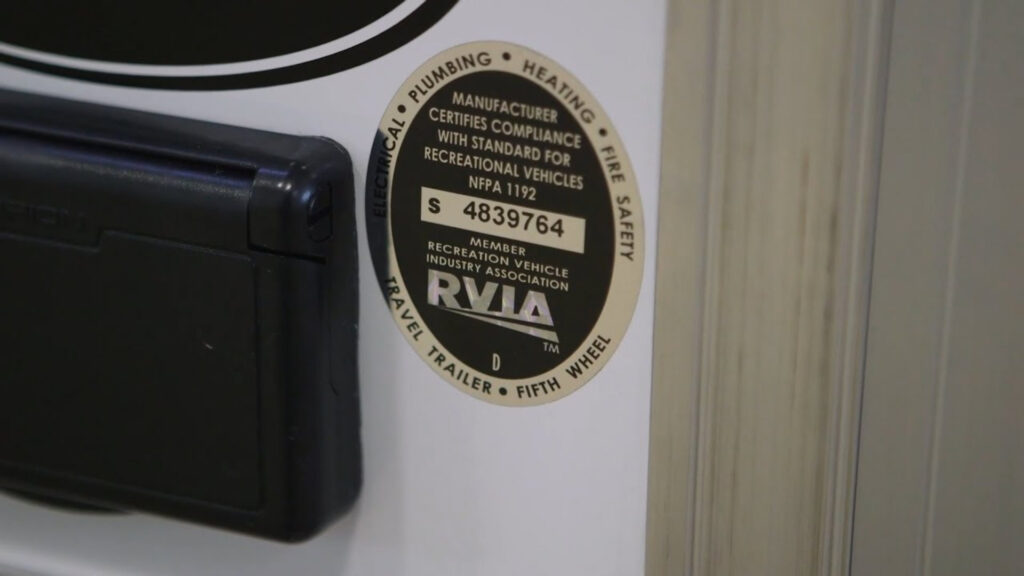
What Does the RVIA Certification Mean?
The RVIA certification means the RV was built and lives up to the National Fire Protection Association (NFPA) safety standards, and the structure qualifies as an RV. The certification helps ensure that RVs get built with safety in mind. They use their extensive resources and knowledge in RV manufacturing. That ensures manufacturers use the safest methods for installing appliances and building a rig.
RVs with RVIA certification meet electrical, plumbing, heating, and fire safety requirements. As a result, you can have some assurance that you’re as safe as possible while RVing. Does it mean that RVs with this certification will be flawless and never break or need maintenance? Absolutely not. However, you can know manufacturers use the best practices and methods during construction to help promote safety.
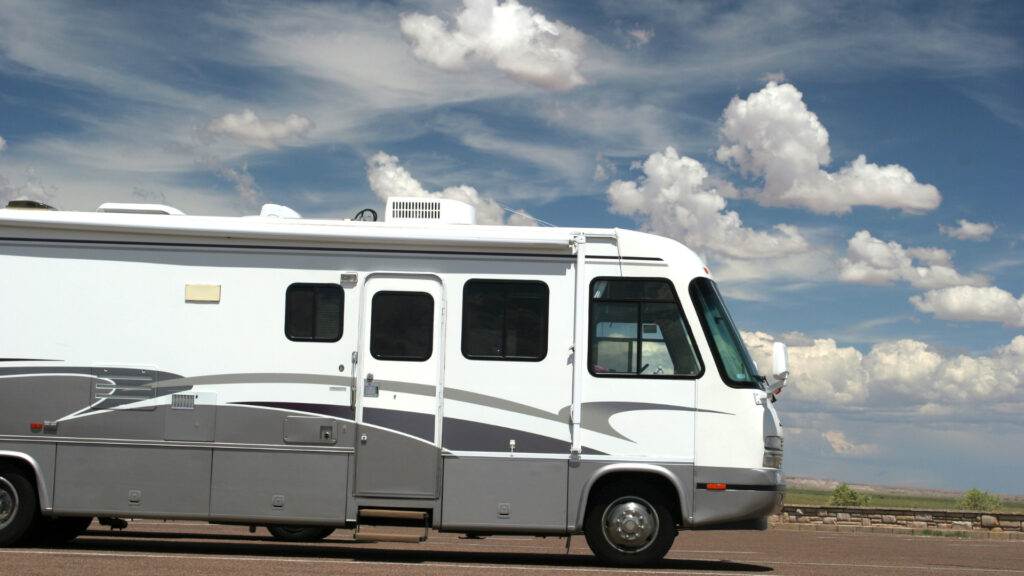
Why Does the RVIA Certification Matter?
The RVIA certification is the industry standard when it comes to RVs. Without the RVIA certification, securing financing, insurance, or campsites can be difficult. Many banks, insurance providers, and campgrounds see the value in the certification. They feel it provides them with some security that the unit is safe. It’s not uncommon to see the certification as a requirement or rule for many RV parks and campgrounds. Without the certification, you’ll need to choose your campsites very carefully.
However, don’t think for a minute that because an RV has the RVIA certification, it also has superior craftsmanship. The RVIA certification is the promise of basic safety when using an RV. RVIA inspectors do routine inspections for the manufacturing process, but they’re not walking through every finished rig to make sure bolts are tight. They don’t have the time or resources to inspect finished RVs. They expect RV manufacturers to do their job.
Standards the RVIA Mandates
To receive RVIA certification, RVs must follow a few standard mandates. Let’s look at some of RV manufacturers’ standards to earn their certification.
NFPA 1192 Standard
The National Fire Protection Association (NFPA) 1192 Standard covers fuel systems, fire and life safety, plumbing, and the requirements for motorhomes, towable, and truck camper vehicles. The criteria that make up this standard help ensure the overall safety of everyone inside the RV. The installation of carbon monoxide detectors, fire extinguishers, and other safety features are just a few requirements manufacturers must follow to comply with the NFPA 1192 standard. RVIA helps ensure RVs meet these safety standards so RVers can be safe while enjoying their RV.
Keep in Mind: Safety is always the first priority when traveling with your friends or family in your RV. Take a look at these RV Fire Extinguishers to keep yourself safe!
National Electrical Code
RVs with RVIA certification also must follow the National Electrical Code (NEC) during construction. Electrical issues can be very dangerous and lead to serious or fatal situations. This is why the RVIA requires members to follow all of Article 551 or 552 of the National Electrical Code. These codes help ensure an RV’s electrical system is safe and secure.
RVIA inspectors will walk through a manufacturing facility, asking questions and observing. They’re looking for any signs of a violation of the NEC. This could be the choice of wiring, how items get connected, or the distances between pieces of equipment. Over the years, research has helped craft standards that ensure electrical safety during construction, and the RVIA values safety.
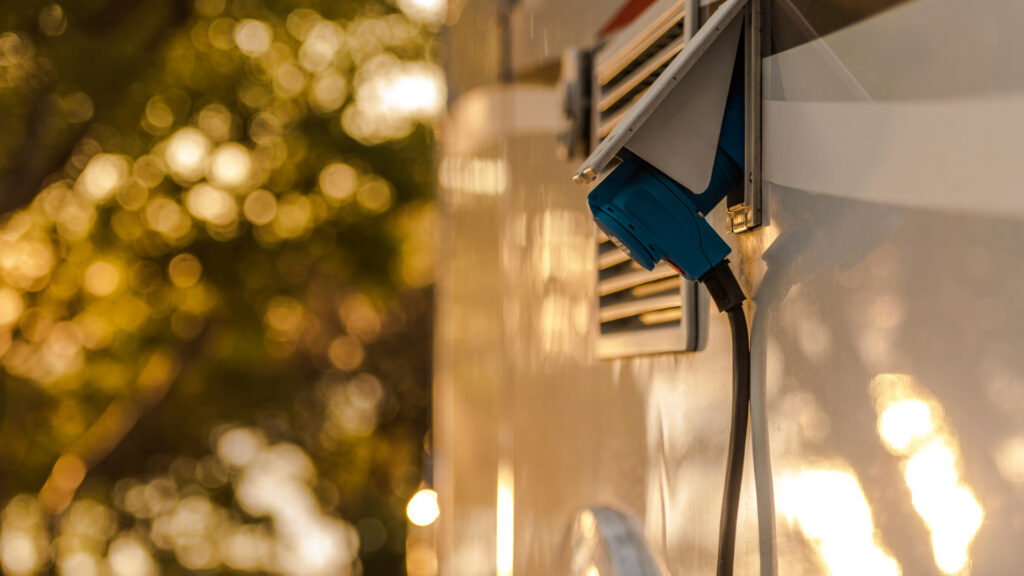
Appliance Installation
RVIA certification requires manufacturers to install appliances according to the OEM’s standards. This helps ensure products and appliances are safe and not used in an unapproved manner by the manufacturer.
Installing appliances in a unique or new manner may save space but can create a potentially dangerous situation. Luckily, RVIA members can’t do this unless they want to risk stiff fines and penalties from the RVIA.
Keep in Mind: Use your RV Outdoor Kitchen Like a Pro with these tips and accessories!
What Does an RVIA Seal Look Like?
The RVIA certification sticker is a black and gold oval-shaped seal. This sticker gets placed prominently next to the entrance to an RV. It should be a major concern if you don’t see this sticker on an RV when shopping. However, every RV on their lot should include this important seal if you’re shopping at a reputable dealer.
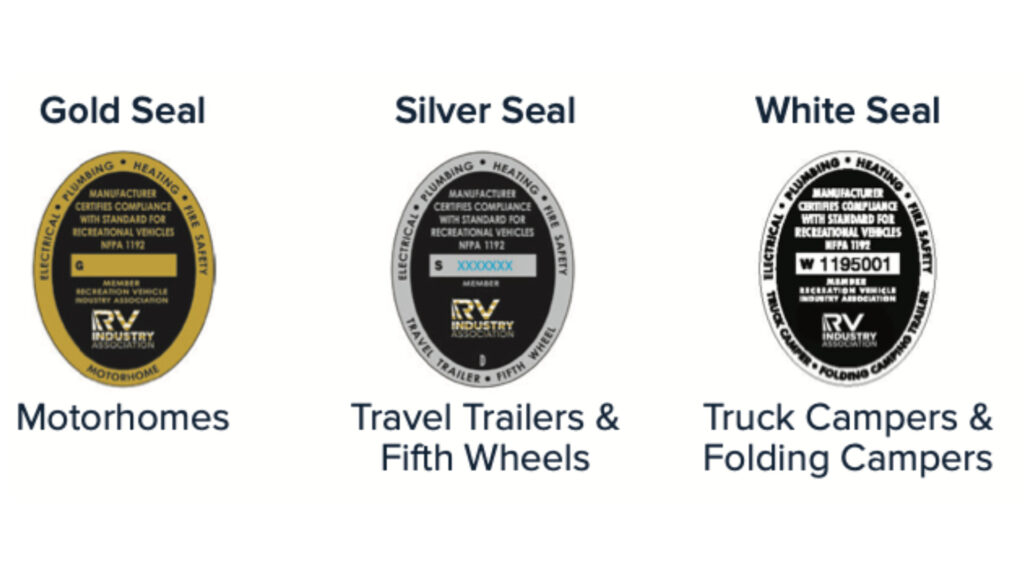
You Want to See an RVIA Certification Sticker When RV Shopping
Buying an RV is a big investment, and you want to ensure you spend your hard-earned money on a well-built and safe rig. An RV without the RVIA certification sticker could pose issues for you getting insurance, a loan, or a campsite for your RV. So make sure you confirm any rig has this necessary sticker before signing on the dotted line. While it won’t mean your RV is perfect, it will provide some assurance when it comes to safety. So make sure you check for this sticker while doing your shopping!




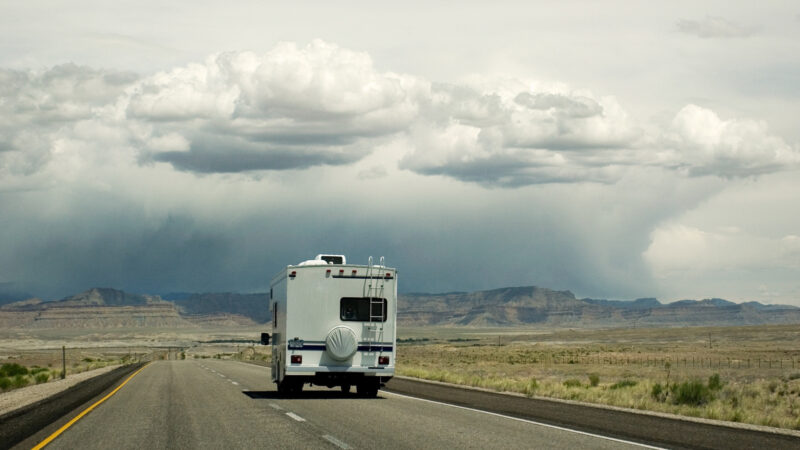
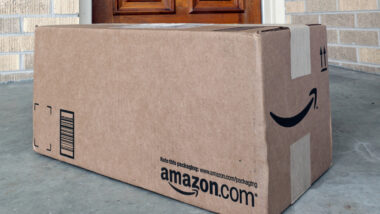
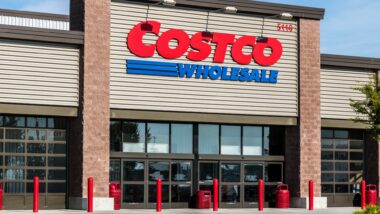
I peeled all my stickers off and stuck them on to a 8.5 inch by 11 inch sheet of paper and placed it inside a plastic sheet protector and inside my binder full of RV product manuals. I don’t want gaudy decals all over the RV.